If you want to succeed with Facebook Ads, you should change your perspective on advertising.
On Facebook, you shouldn’t promote. You should tell a story that informs and entertains at the same time, sometimes with a personal touch.
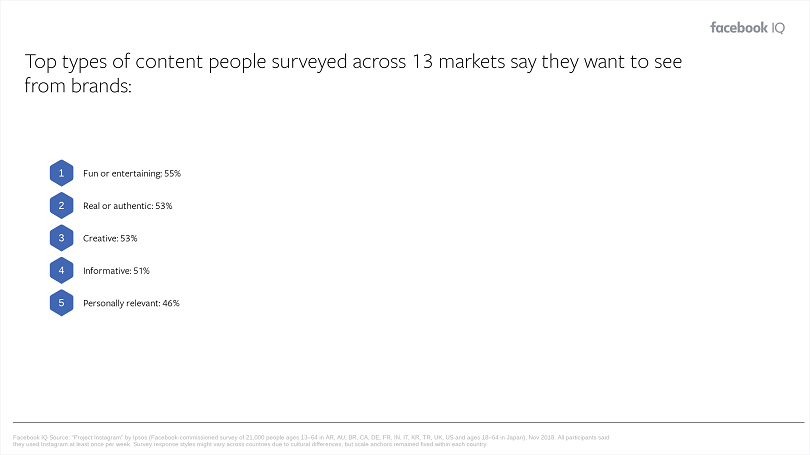
In one of his blog posts, Seth Godin stresses that your job is to interact with people who care.
In other words, don’t make people buy; present your product or service and let them buy it.
But how can you be sure that your Facebook ad delivery strategy works well?
The relevance score on Facebook ads can help you find out.
What Is the Facebook Ads Relevance Score?
The Facebook relevance score is a metric that determines (on a scale of 1 to 10) how your target audience accepts the ads you show them. A score of 1 means they hate them; 10 means they love them.
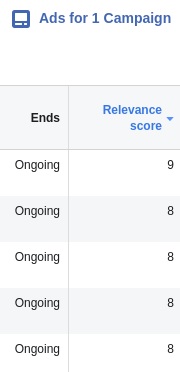
You can check the relevance score once an ad has collected 500 impressions.
The Ad Relevance Diagnostics Update
Metrics on Facebook are always evolving. The Facebook ad relevance score has recently been updated to three new metrics that offer ad relevance diagnostics:
Quality Ranking
The quality ranking denotes the quality of an ad compared to other ads displayed to the same audience. Facebook calculates assessments of clickbait, engagement bait, and other factors that shape users’ feedback.
Engagement Rate Ranking
The engagement rate ranking measures the expected engagement rate for an ad compared to other ads displayed to the same audience. Facebook calculates the likelihood that users will click, comment, share, or engage in any other way with your ad.
Conversion Rate Ranking
The conversion rate ranking denotes the expected conversion rate for an ad compared to other ads displayed to the same audience. Facebook calculates the likelihood that users will complete your ad objective and convert.
All three metrics can have one of three values:
- Above average (100% to 55%)
- Average (35% to 55%)
- Below average (below 35%)
Let’s analyze possible ranking scenarios:
| Quality Ranking | Engagement Rate Ranking | Conversion Rate Ranking | Reason | Recommendation |
|---|---|---|---|---|
| Above average or average | Above average or average | Above average or average | Everything’s perfect! | Choose your ad objective. |
| Below average | — | — | Your ad is of low quality. | Come up with higher quality content for your ad or change the audience for it. |
| Above average or average | Above average or average | Below average | Your ad doesn’t convert. | Some products and services have a lower conversion rate than others. Come up with better copy for your ad. Provide users with a better post-click experience. Pick an audience with higher intent. |
| Above average or average | Below average | Above average or average | People aren’t interested in your ad. | Make an ad that’s more relevant to your audience by changing its appearance. Pick an audience with higher intent. |
| Below average | Above average or average | Above average or average | Your ad is of low quality. | Come up with higher quality content for your ad or change the audience for it. |
| Above average or average | Below average | Below average | People aren’t interested in your ad or your ad doesn’t convert. | Make an ad that’s more relevant to your audience by changing its appearance. Pick an audience with higher intent. Provide users with a better post-click experience. |
| Below average | Above average or average | Below average | Your ad contains clickbait content. | Some products and services have a lower conversion rate than others. Promote your products and services more clearly. |
| Below average | Below average | Below average | Everything’s bad! | Change your current strategy and build a new one from scratch. Test different strategies, compare results, and pick the one that works best. |
Facebook underscores that you should optimize your ads for achieving your ad objectives, not for improving ad relevance diagnostics. Sometimes, even high-performing ads have below-average values.
If you successfully achieve your goals with your ads, it’s not necessary to improve your ad relevance diagnostics.
Where to Find Your Relevance Score on Facebook?
Step 1. Go to Ads Manager.

Step 2. Choose the Ads tab.

Step 3. Open the Columns drop-down and click Customize Columns.
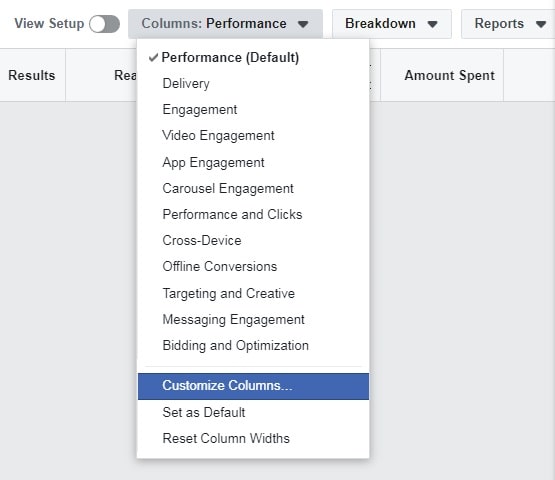
Step 4. Find the Relevance Score column in the list. It’s selected by default.
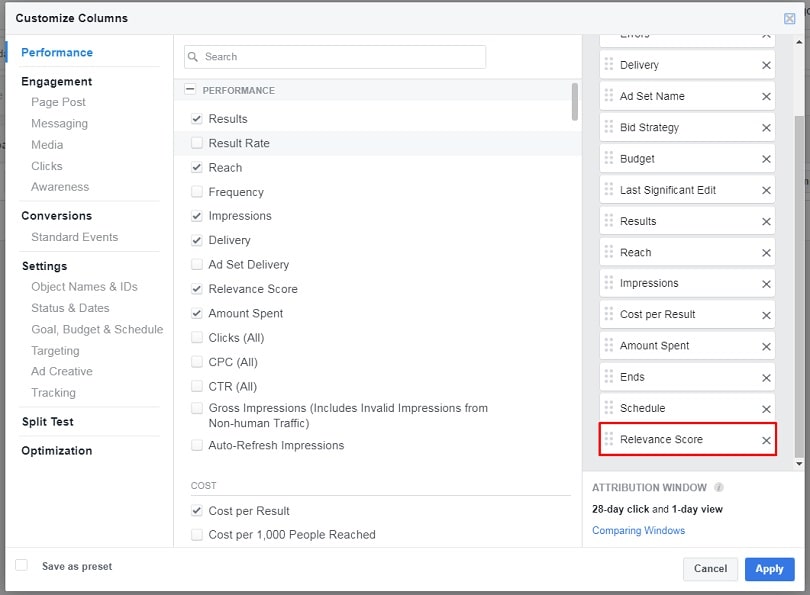
If you (or perhaps a colleague) removed it from the list of selected columns, just type “relevance score” in the search box and check the box to add it again.
What’s a Good Relevance Score on Facebook?
There are three major factors that affect the ad relevance score on Facebook:
- Positive feedback
- Negative feedback
- Ad performance
For example, when someone clicks on an ad, watches a video, and makes a conversion, your relevance score increases. To reach a score of 8, 9, or 10, you should create ads that show positive results.
To maintain the highest score, you should do everything not to give users a reason to click the “I don’t want to see this” button on your ads and hide your posts.
The worst nightmare of any marketer is when someone reports an ad.
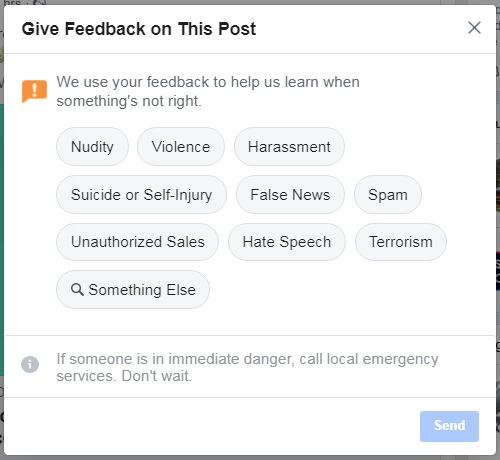
However, if you don’t violate Facebook’s policies, there’s nothing to worry about. Facebook won’t impose any sanctions on your ad.
Why is the Relevance Score Important?
The Facebook ad relevance score is essential for understanding how close you are to finding the perfect audience for your business and how good you are at understanding this audience.
Facebook claims that this metric is an output, not an input.
Keep in mind that a high relevance score doesn’t give your ad any advantages when it takes part in an ad auction. It merely points out possible weaknesses in your ad components and targeting strategies.
Since the relevance score is most important for cost-per-click (CPC) ads, it only indirectly affects your budget. The interesting thing is that the effect can be different.
Your ad may achieve a high relevance score, but its cost per click may be high and its click-through rate (CTR) may be low, or vice versa.
So don’t focus on increasing the relevance score to increase the relevance score itself; focus on thinking out better ways to deliver your ads and enhance their quality.
6 Ways to Improve Facebook Relevance Score
Here are a few recommendations that will help your ads get 10 out of 10.
Deliver Ads to Narrow Audiences
One of the best ways to improve the relevance score on Facebook is to be as specific as possible when creating audiences for your ads.
Facebook offers lots of targeting options for any kind of business.
It’s not enough to specify age, gender, and language. We recommend customizing every field in the Audience category of your ad set.
Include all possible tags related to your industry in the Detailed Targeting field: interests, habits, and behaviors of your audience.
Say you want to show your ads to gamers. There are dozens of tags you can use for a gamer audience.
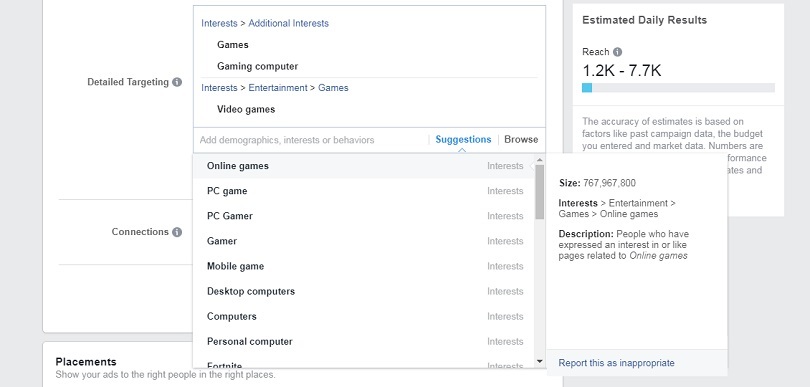
It works the same for any niche. The more tags you choose, the narrower the audience you’ll create and the larger the reach you’ll get.
In some cases, picking the right connections may also be beneficial to your ad campaign.
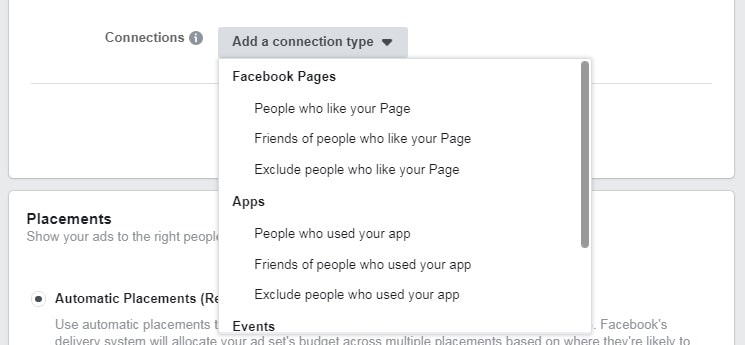
For example, when someone clicks on an ad, watches a video, and makes a conversion, your relevance score increases. To reach a score of 8, 9, or 10, you should create ads that show positive results.
In addition, it’d be perfect if you created a few tried and tested Custom and Lookalike Audiences that already include reliable customers.
Also, you can use the Audience Insights tool, which includes lots of options for creating audiences from everyone on Facebook or just people connected to your Page.
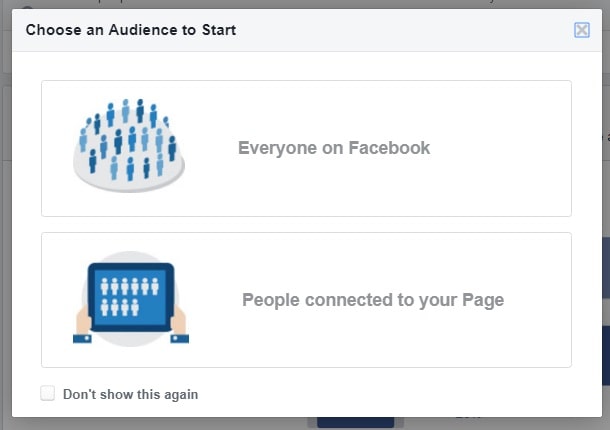
Audience Insights can help you find people with particular interests, devices, education, work, and many other characteristics.
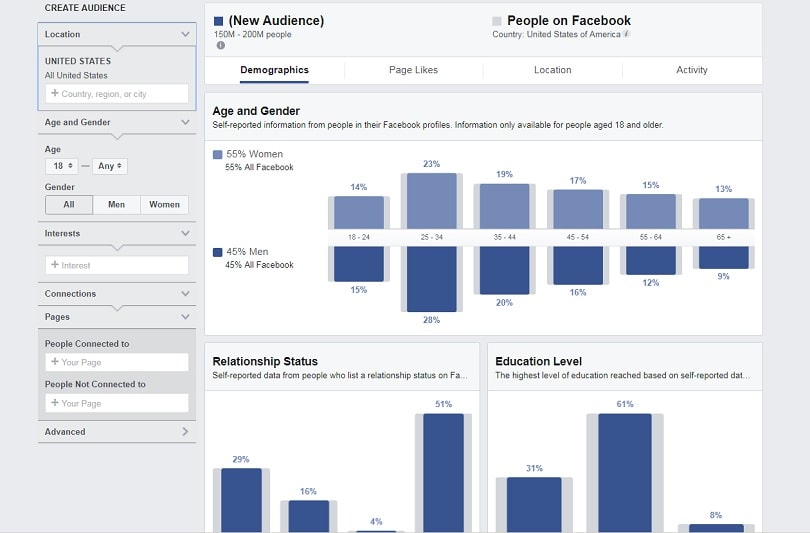
After you create your audience, you can use it in Ads Manager right away or save it for a future ad campaign.
Test Different Ads for Different Audiences
Facebook marketing isn’t rocket science. And launching an ad campaign is much easier than launching a rocket.
Still, both rocket scientists and advertising specialists learn a lot when they practice a lot.
You can run various types of tests. Display different ads to the same audience, pick different audiences to show the same ad to, or use any other narrow strategy.
Refresh Ads That Boost Conversions
Increasing the Facebook relevance score by refreshing existing ads may work too.
Say your ad is showing positive results. If you continue to show it for too long, the odds of turning those positive results into negative feedback are pretty high — viewers may simply get bored of it. It happens. Consider changing ad components at the right time to preserve the status quo.
If you’re only making your first steps in Facebook marketing and haven’t experienced the relevance score drop-off, get inspired by a few great ad examples from the world’s top brands to avoid it.
Don’t Underestimate the Value of Your Ad Message
No matter how advertisers, marketers, and even Facebook stress the significance of images and videos, in most cases, they don’t work without some well-written copy.
And the perfect text may work even better than any visual.
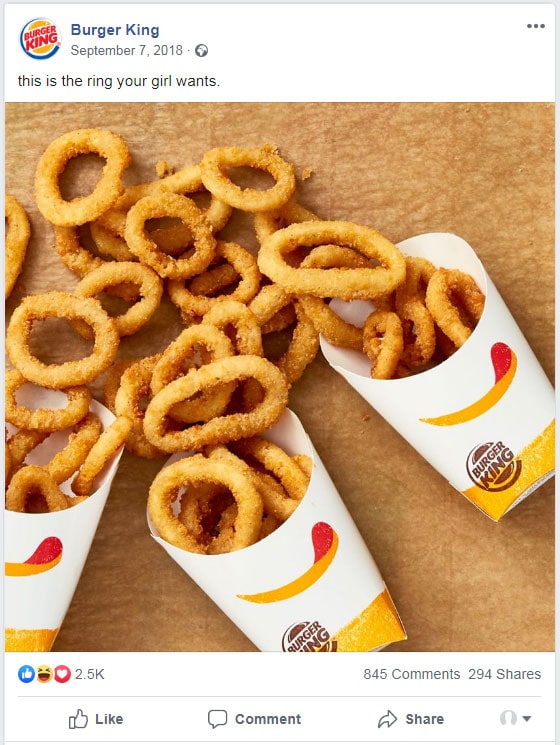
Professionals talk about how important it is to add a call to action (CTA) to your message. Indeed, a CTA is a great method to attract customers, especially if you offer discounts and promote special deals.
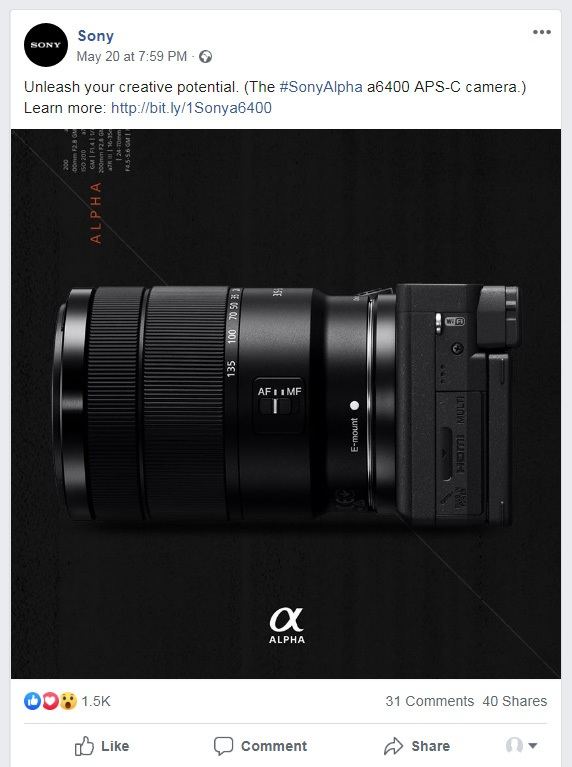
But It doesn’t mean you should focus on the call to action.
Here’s the thing: Any CTA smells like advertising, and users don’t always like that. As we’ve mentioned, companies should strive to tell about their products and services rather than promote them.
That’s why you should mix your CTA with text that brings real value.
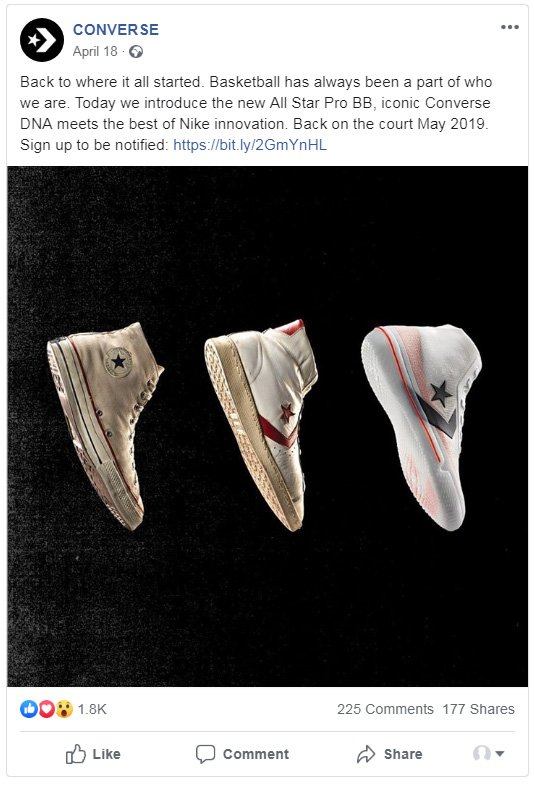
However, if you want to achieve a high relevance score, you should create your story wisely. First of all, keep it short. Second, remember that the perfect place for your call to action is the end of your message.
Remember a Few Important Things About Images
Since we’ve just described the benefits of ad copy, let’s start this part with a one really important piece of advice: DO NOT put text on your ad images.
One more reason why your relevance score may be low is because you don’t use images related to your products or services.
Just in case, check the design recommendations and technical requirements for images on different Facebook placements to make sure you follow them.
Focus on Video Advertising with Artificial Intelligence
Our final recommendation on how to increase your Facebook relevance score revolves around the growing popularity of video content.
Well-targeted videos are more likely to grow conversions (and your relevance score) than any other format.
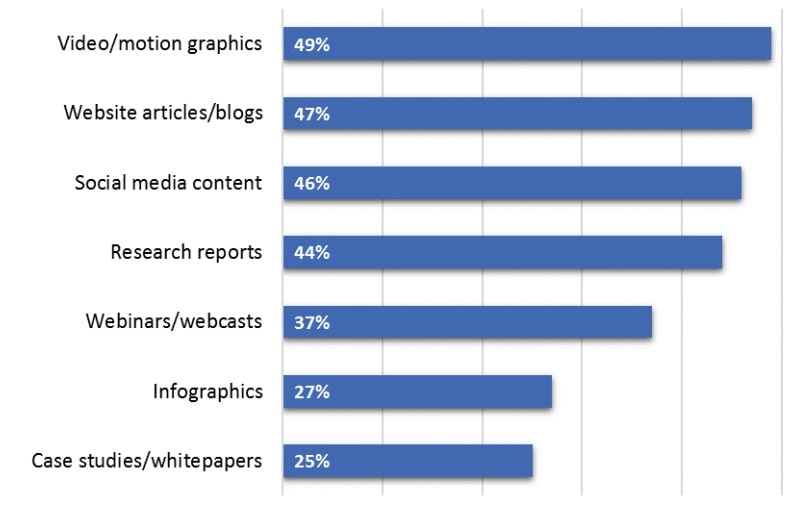
According to Ascend2, video is the most effective content type to achieve important marketing objectives.
At the same time, 64% of marketers experience difficulties when producing videos.
Artificial intelligence solves this problem. Automated systems like Softcube produce high-quality video ads at scale and do so much faster than any professional human editor.
For example, this video ad was 100% made without human involvement:
The Softcube AI platform watched the original video, cut the three best scenes, added a product packshot, and rendered the final result. And it did all this automatically.
Score a Relevance Victory with Your Ads
What is a good relevance score on Facebook? It’s not just a number. It’s your approach toward your Facebook ads.
If your Facebook ads show great results along with a low relevance score, don’t hurry to change them; after all, this metric doesn’t affect ad bidding.
If your ad performance is poor and it results in a bad score, however, try to:
- target a different (and narrower) audience
- change your ad creatives
And of course, don’t underestimate the power of video marketing!
If you want to test our artificial intelligence service, you can do it right now.



